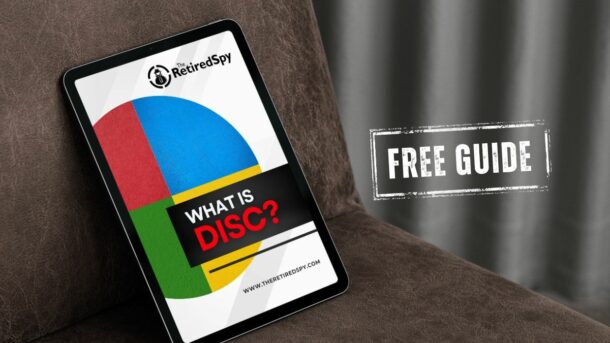How can you use DISC to help or assist your work with your sales team?
This is a question I am often asked, and the answer is complex, but let’s try to break it down into some simpler concepts here that might help get you started.
One task your team is constantly working on is contacting new customers, leads, prospects (and likely you do this yourself as well!).
To begin with, let’s look at how each type of person approaches contacting, to gain a better understanding of their skills and motivation. We’re going to approach this by assuming that you already have done a DISC personality assessment with your team, and you are aware of which quadrant each of your team falls into (D, I, S, or C).
Haven’t done that yet? Have a look here at some tools we have available to do just that.
Using DISC For Contacting Prospects – Understanding Your Team
Let’s talk about each DISC personality type as it relates to contacting prospects:
The D persona is determined. They will approach contacting people as a task, will keep the goal in mind and will drive forward to accomplish the goal. Rejection will not so easily deter them, because their goal will be to focus on their number of contacts first, and a rejection is still a contact! They just directly move on to someone else.
The D persona can gain more traction by being more patient with potential prospects who may need time to think things through before giving them an answer. The High D persona must adapt their naturally decisive style to give time to less decisive styles. People will be attracted to their powerful style and feel confident in their ability to meet their needs.
The I persona is inspiring with their fun, friendly style, and naturally attracts many people to them. They respond well to people who seem to be light-hearted and make them feel involved in the fun or included in the excitement.
The I persona can gain more traction by remembering to follow through with commitments to potential clients and raise their credibility with other more serious styles. People will be attracted to their fun-loving style and feel that doing business with them will be fun too.
The S persona is supportive with their reserved, warm style, and may find it hard to make contact calls. They would prefer to get to know someone first to comfortably see if they can really help the other person.
The S persona will gain more traction and have more success when they approach prospective clients with more confidence or decisiveness. This High S persona can adapt their stable, reserved style to be more outgoing and assertive. People will be attracted to their stable, warm style and feel comfortable in their ability to help.
The C persona is cautious with their reserved, correct style, and may not naturally like to make calls to contact because they want to do it perfectly. They would prefer to explain how their system works and give all the details instead of engaging in the informal conversation of getting to know their client.
The C persona will gain more traction when they learn to be more relational. This High C persona could adapt their correct, conscientious style to be more caring and flexible. People will be attracted to their conscientious, careful style and feel confident in their ability to handle their business accurately.
Using DISC To Understand Prospects
On the other hand, if you want to know how to gain interest and attention of DISC personality styles from the other side of the spectrum – when they are your prospects, leads or clients, below are some tips and insights to take note of.
Tips About The High D Style

Let’s start with the “High D” prospect.
When you are contacting a prospect or client who is a “High D”, use a direct and bottom-line approach with options. These prospects will be very busy and must be attracted to what you have to offer. Tell them just enough of what they want to know to get their attention, so they will decide to accept your invitation to assist them. Simply tell them that you have an opportunity, and you want them to be in on the action.
Be careful not to find yourself answering too many of their what questions, or they may decide that they know what to do on their own! As you contact the High D, be sure and think in terms of what your assistance will do for them.
• Expect to overcome obstacles
• Focus on action-based results
• Be brief and specific
• Be credible
• Provide challenge and choices
• Get to the bottom-line benefits fast
For the High D, think in terms of “What…”
What if… time and money were not an issue, what would you do?
What if… you could spend the rest of your life doing the things you want to do?
What if… you could try something and knew for sure you would not fail?
What if… you could live anywhere in the world?
What if… you could own any car you wanted?
What if… you could vacation with your spouse wherever you wanted?
Tips About The High I Style

Now let’s look at the High I personality style.
Use a warm, friendly approach with the High I. These prospects will want to talk and will be attracted by your excitement. They will want to talk about who they know and who might know you, and they seem to know just about everyone! They will do most of the talking but remember to tell them about who they might recognize or who will recognize them to get their attention. Then they will be excited to accept your invitation. Be careful not to find yourself listening to their stories about too many other things, or they may forget why you called. As you contact the High I, be sure and think in terms of who they might be interested in getting to know.
• Let them express their ideas
• Keep a friendly environment
• Focus on their accomplishments
• Provide recognition for their achievements
• Gently steer them back to business
• Turn talk to action
For the High I, think in terms of “Who…”
Who… would you like your kids going to school with?
Who… would you like your spouse spending their free time with?
Who… could help you gain financial freedom?
Who… would you like to come to your new home?
Who… would you like to see you when you walk out your front door?
Who… would you like to show off that dream car to?
Tips About The High S Style

When it comes to a High S personality style prospect or client, here’s what you should do.
I recommend using a gentle and non threatening manner with the High S. These prospects will want to get to know you and to know that you have a genuine interest in them. You will need a relationship with them before they will be comfortable exploring how you might be able to assist them. They will be attracted by your affirmation and appreciation of them, and will slowly be comfortable with accepting your invitation. Be careful not to find yourself answering too many of their how questions, or they may be discouraged and withdraw. As you contact the High S, be sure and think in terms of how you can meet their needs for support.
• Be warm, agreeable and unthreatening
• Talk slowly and do not rush them
• Give them time to adjust to new ideas
• Show appreciation for their interest
• Demonstrate sincerity
• Provide follow-up support
For the High S, think in terms of “How…”
How… can I help you achieve your dreams?
How… can I get you the information you need to consider this opportunity?
How… can I best answer your questions?
How… can you rearrange your schedule to be able to meet with me?
How… are you feeling about where you are now living?
How… would you like to support your family more easily?
Tips About The High C Style

And finally, let’s consider contacting the High C prospect, client or lead.
Use a factual approach and unemotional manner with the High C. These prospects will be very cautious and will want to know why you are interested in them. Tell them just enough of why they would benefit to get their attention, so they will decide to accept your invitation. Be sure to tell them that you are willing to answer all the questions that they will want to ask at the appointment. Be careful not to find yourself answering too many of their why questions on the phone. As you contact the High C, be sure and think in terms of why working with you will benefit them.
• Check your facts
• Avoid emotional appeal
• Answer questions carefully
• Be specific on points of agreement
• Show “pros & cons”
• Provide lots of backup material
For the High C, think in terms of, “Why…”
Why… are you concerned about your future?
Why… is financial freedom important to you?
Why… is it important to you to be associated with a quality company?
Why… would this opportunity interest you?
Why… do so many people like these products?
Why… would this help you and your spouse as a couple?
Summing It Up
When you use The Four Temperament (DISC) Model of Human Behaviour to learn to interact with different personality styles, you present yourself in a way that others will enjoy. You draw their interest so that you have their attention.
While everyone is unique, DISC can help you group shared characteristics to understand better how people are motivated and behave. It becomes easier to understand why people act the way they do, and in turn, to help them understand the opportunity you are presenting.
In sales, success depends on your ability to connect with people, establish and maintain rapport with customers, and inform them on your products or services in order for your customers to make an informed decision and buy from you. Our DISC training is a powerful tool to help you and your team achieve these goals.
So, if you or your sales team could use guidance to boost your results by understanding customer behaviour and their preferred communication styles, have a look at DISC Certification and Training events here.
Found this interesting? You might like these too…
Law Enforcement and the Four Temperament (DISC) Model of Human Behaviour


